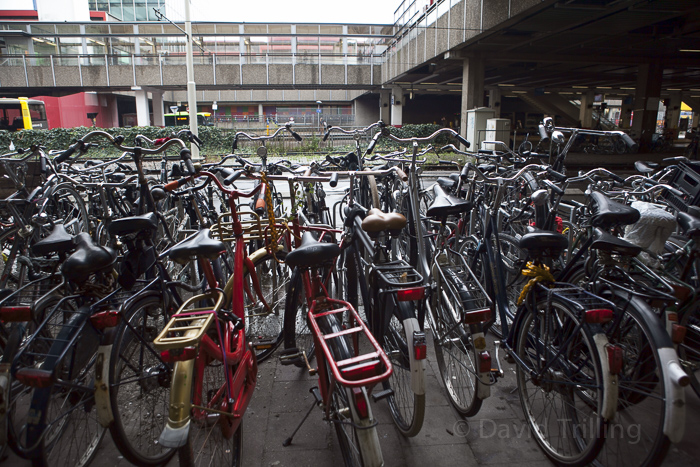The issue: As biking grows in popularity among commuters, more American cities are following European models and installing bike lanes. Sometimes these are merely demarcated with a painted line; sometimes they are physically separated from roads altogether. The cycle is virtuous: as more people bike, the safer it becomes to bike, according to research from the New York City Department of Transportation.
At the same time, biking has a well-documented positive impact on public health overall — fewer cars means less pollution. (Though some researchers have found that cycling in the world’s most polluted cities can have a negative impact on an individual’s health.) But, until now, there has been little quantifiable evidence if the lanes materially benefit a city.
An academic study worth reading: “The Cost-Effectiveness of Bike Lanes in New York City,” by Jing Gu and her colleagues at Columbia University, published in BMJ Injury Prevention, 2016.
Study summary: Looking at multiple years of data on ridership, money spent to improve or expand bike lanes and the cost of tending to cyclists involved in accidents, the authors estimate the cost-effectiveness of New York City’s investment in bike lanes.
Based on what had been spent between 2007 and 2014, Gu and her colleagues estimated that the city’s 2015 outlay of $8,109,511 resulted in 45.5 miles of new bike lanes.
Taking into account the past cost of bike-related injuries and funerals, they also estimated quality-adjusted life years (QALYs, a common economic metric) for all New Yorkers. Their model scales individuals from 0 to 1, where 0 represents death and 1 represents a year in the state of perfect health. The model accounts for injuries (a negative impact on the QALY scale), riding every day (positive), pollution (negative) and the reduction in pollution due to an increase in bike riders (positive). The benefit of looking at QALYs is that they can be compared to different medical interventions, such as HIV/AIDS screening and treatment.
The study is based on an assumption: While research has shown a correlation between new bike lanes and increased ridership, there is no way to prove causation. The authors acknowledge the increase in bike ridership could be — however unlikely — a fad.
Findings:
- For every mile the city constructed, bike ridership increased 0.4 percent.
- The construction in 2015 would have increased bike ridership by 9.32 percent, thus reducing pollution and traffic congestion.
- “New bike riders gain an average of 0.033 QALYs [quality-adjusted life years] per year from increased exercise and New Yorkers as a whole gain 0.047 QALYs per year from reduced exposure to pollution.” This suggests the average New Yorker benefits from the increase in biking even more than the bikers do themselves — when the chance of an accident is factored into the bikers’ overall health.
- Each QALY gained cost the city $1,297. The authors consider this “an exceptionally good value.” By comparison, HIV/AIDS screening and treatment in at-risk populations costs $50,000 per QALY gained. Bike lanes were cheaper, by this measure, than health insurance or Medicaid.
Helpful resources:
The National Highway Traffic Safety Administration publishes detailed crash statistics for cyclists as well as drivers. Search the database here.
The League of American Bicyclists publishes ridership data and lobbies for bicycle-friendly cities.
Several recent studies have analyzed bike-sharing programs. A 2015 study in the Journal of Cleaner Production looked at characteristics of sustainable bike-sharing China. A 2015 study in the Journal of Community Health looked at helmet use by bike sharers in New York.
Other research:
A 2011 study in BMJ Injury Prevention showed that bike lanes that are physically separated from roads are associated with a reduction in injuries to cyclists. Riders also appear to prefer them.
Journalist’s Resource has profiled related research in the past: One study models different approaches for increasing bicycle use and details their costs, effectiveness and health impacts; a 2014 paper sought to better understand cyclists’ risk factors by equipping them with helmet-mounted cameras; another examined the health effects experienced by bike commuters while cycling in urban traffic; and one discussed the relative safety of on-street bicycle lanes and physically separated cycle tracks.
Keywords: Bikes, bicycles, cyclists, cycling, traffic, safety, public health, traffic


Expert Commentary